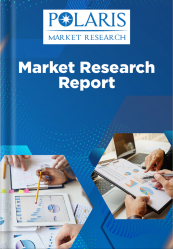Induced Pluripotent Stem Cell (iPSC) market Outlook:
Induced Pluripotent Stem Cell (iPSC) Market size and share is currently valued at USD 1,940.39 million in 2023 and is anticipated to generate an estimated revenue of USD 4,355.56 Million by 2032, according to the latest study by Polaris Market Research. Besides, the report notes that the market exhibits a robust 9.4% Compound Annual Growth Rate (CAGR) over the forecasted timeframe, 2023 - 2032
Market Overview
The Induced Pluripotent Stem Cell (iPSC) market is rapidly evolving, revolutionizing the landscape of regenerative medicine, biomedical research, and drug discovery. iPSCs, which are derived from adult somatic cells and reprogrammed into an embryonic-like pluripotent state, offer immense potential for treating various degenerative diseases, genetic disorders, and tissue engineering applications. The market is being driven by increasing investments in stem cell research, rising incidences of chronic diseases, and advancements in gene editing technologies such as CRISPR.
As demand for alternative sources of stem cells grows, iPSCs are emerging as a viable and ethical solution compared to embryonic stem cells (ESCs). Governments, research institutions, and biotechnology firms are significantly investing in the development of iPSC-derived therapies, paving the way for novel treatment options in neurology, cardiology, and oncology.
Key Market Growth Drivers
1. Expanding Applications in Drug Discovery and Disease Modeling
Pharmaceutical companies and research institutes are increasingly using iPSCs for high-throughput drug screening, toxicology testing, and disease modeling. iPSC-derived organoids and cell lines are transforming the way drugs are tested, enabling the identification of potential side effects and efficacy before clinical trials.
2. Rising Demand for Regenerative Medicine
iPSC technology is gaining traction in regenerative medicine due to its ability to generate patient-specific cells for cell therapy. With an aging population and an increasing prevalence of chronic diseases such as Parkinson’s, Alzheimer’s, and cardiovascular disorders, the demand for iPSC-based regenerative therapies is expected to surge.
3. Advancements in Gene Editing and Tissue Engineering
Breakthroughs in gene-editing technologies, particularly CRISPR-Cas9, have enhanced the therapeutic potential of iPSCs. By correcting genetic mutations, iPSCs hold promise for treating inherited disorders and improving tissue regeneration, further boosting market expansion.
4. Increasing Government and Private Funding
Global governments and private investors are providing substantial funding for stem cell research. Initiatives such as the U.S. National Institutes of Health (NIH) funding and the European Horizon 2020 program are accelerating research efforts, leading to the commercialization of iPSC-based therapies.
Browse Full insights:
Market Challenges
1. Ethical and Regulatory Concerns
Despite its advantages, the iPSC market faces ethical challenges related to genetic modifications. Regulatory agencies such as the FDA and EMA have stringent guidelines for stem cell therapies, which can slow down the approval process for new treatments.
2. High Costs of Research and Development
Developing iPSC-based therapies involves high production costs and complex reprogramming processes. The requirement for specialized facilities and expertise further adds to the financial burden on biotech companies and research institutions.
3. Potential Risk of Tumor Formation
One of the major concerns with iPSC-derived therapies is the risk of teratoma (tumor) formation. Scientists are actively working to enhance the safety and stability of iPSC-based treatments to mitigate this challenge.
Regional Analysis
North America
North America dominates the iPSC market, with the U.S. leading in stem cell research and regenerative medicine. The region benefits from a strong presence of biotechnology firms, academic institutions, and government funding. The FDA’s approval of iPSC-based clinical trials has further accelerated market growth.
Europe
Europe is a key player in iPSC research, with Germany, the UK, and France at the forefront. The European Union’s regulatory framework supports stem cell research while ensuring ethical compliance. Increased collaboration between research institutions and biotech firms is driving innovation in the region.
Asia-Pacific
The Asia-Pacific market is experiencing rapid growth, fueled by increasing investments in biotechnology and government initiatives. Countries like Japan, China, and South Korea are leading in iPSC research, with Japan pioneering the first-ever iPSC-based clinical trial for Parkinson’s disease. China’s focus on regenerative medicine and stem cell therapies is expected to further boost market expansion.
Latin America
Latin America is gradually emerging as a potential market for iPSC research, with Brazil and Mexico making significant advancements. However, limited funding and regulatory challenges pose hurdles to widespread adoption.
Middle East & Africa
The Middle East and Africa have a nascent iPSC market, with research efforts concentrated in countries like Israel and the UAE. Government initiatives to promote biotechnology and medical research are expected to drive future growth.
Key Companies in the iPSC Market
Several biotechnology and pharmaceutical companies are leading the development of iPSC-based therapies. These key players are actively engaged in research collaborations, clinical trials, and commercial-scale production of iPSC-derived products.
Fujifilm Cellular Dynamics
Thermo Fisher Scientific
Lonza Group
StemCell Technologies
Takara Bio
REPROCELL
Evotec SE
Sumitomo Dainippon Pharma
BlueRock Therapeutics
Conclusion
The Induced Pluripotent Stem Cell (iPSC) market is poised for significant expansion, driven by advancements in regenerative medicine, increased investment in stem cell research, and growing demand for personalized therapies. While challenges such as regulatory constraints and cost barriers persist, ongoing technological innovations and strategic collaborations are expected to overcome these hurdles.
More Trending Latest Reports By Polaris Market Research:



Write a comment ...